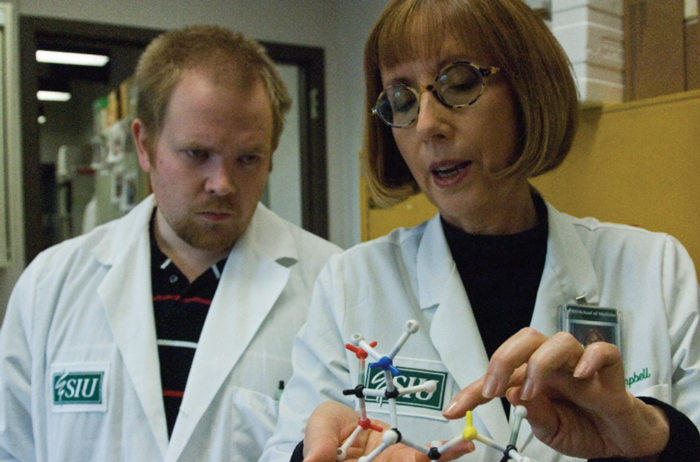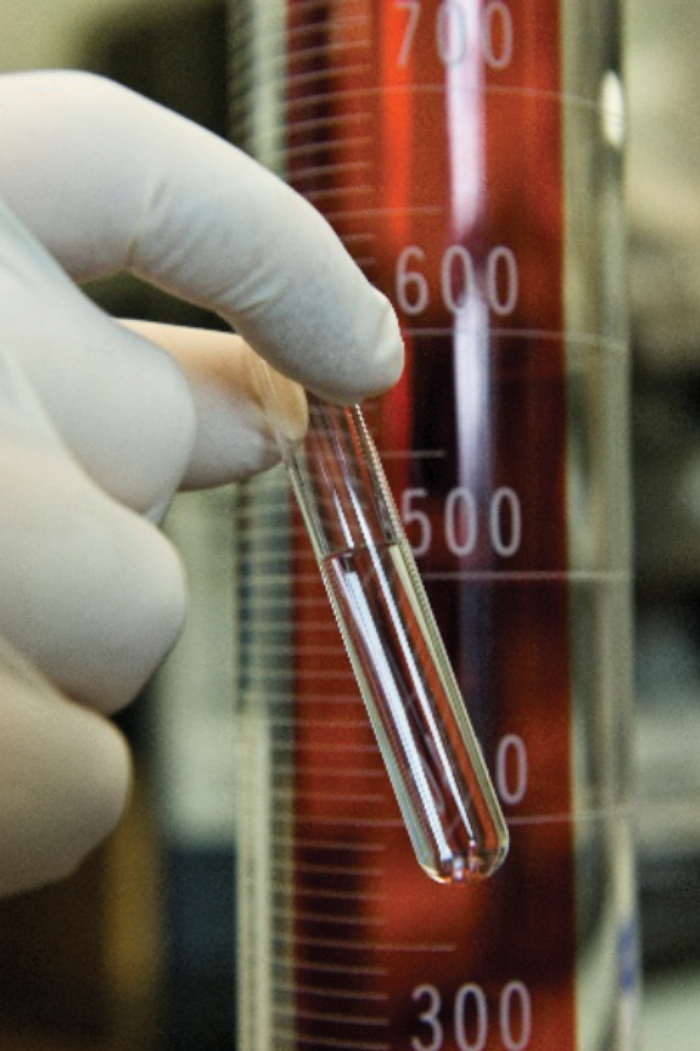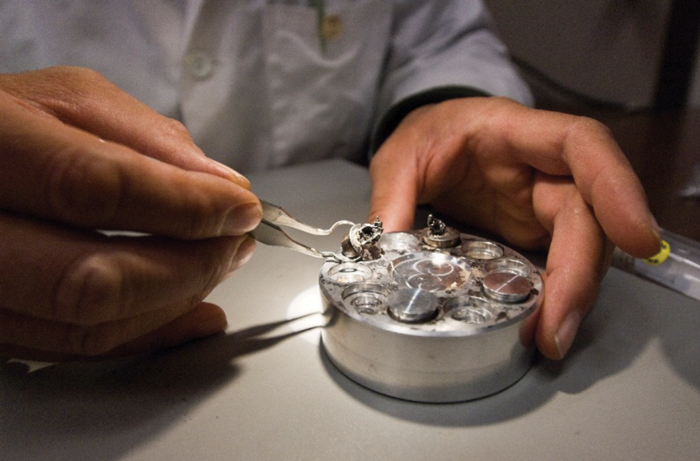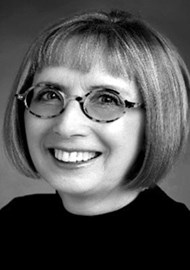Preventing an avoidable hearing loss before it begins would be the public health dream. In this article Kathleen Campbell takes us through one option that is showing the potential to fulfil that ambition. Kathleen explains the development of a preventative agent, the current thinking and the next stage of bringing a prevention to the mass market.
The need for a drug to prevent and treat noise induced hearing loss
Currently no drug is approved by the US Food and Drug Administration (FDA) for prevention or treatment of hearing loss. The situation is similar world-wide. While many drugs are advertised and sold over the Internet for hearing loss and / or tinnitus none of them have been approved through the rigorous clinical trials process to truly determine safety and efficacy in humans.
The clinical need for a pharmacologic agent to reduce the incidence of hearing loss is clear, particularly for noise-induced hearing loss. Noise is the most common cause of hearing loss world-wide and much of what is attributed to age related hearing loss is frequently the result of noise exposure over a lifetime.
The limitations of physical hearing protectors
Physical hearing protectors, plugs and / or muffs, often called “hearing protection devices” or HPDs, can reduce the risk of noise induced hearing loss in many instances. However HPDs have a number of limitations. First, HPDs, even when properly used, can only reduce sound input by 20 to 30 dB. Given that prolonged exposure over 85 dB SPL over time can cause permanent noise induced hearing loss, even with optimal HPD use, many common noise exposures would exceed the ability of HPDs to fully protect hearing. For example jack hammers and some rock concerts average 130 dB SPL. According to the Center for Disease Control Guidelines, exposure at that level should be limited to 5-15 minutes, but most exposures greatly exceed that duration. M-16 weapon fire peaks at 155 dB SPL per round fired. At high intensity levels, sound travels directly through the skull to the inner ear via bone conduction. Therefore while HPDs can reduce the very effective transmission of sound through the external and middle ear to the cochlea of the inner ear, at high intensity levels the direct transmission of sound through the skull can result in permanent noise induced hearing loss.
“Noise is the most common cause of hearing loss world-wide and much of what is attributed to age related hearing loss is frequently the result of noise exposure over a lifetime.”
Further, HPDs are frequently used improperly or not at all. HPDs are frequently not worn by concert or firework attendees because they are perceived to reduce the experience. Power tool users and skeet shooters may find them hot and uncomfortable or place them incorrectly. Physical hearing protectors also reduce environmental awareness, reducing the ability to hear commands or identify a target. A soldier with good hearing can generally identify a target in 40 seconds, with poor hearing 90 seconds. That 50 second difference can mean the success or failure of a mission, and sometimes the life or death of the soldier.

Dr Campbell reviews the structure of D-methionine with Research Associate Daniel Fox, PhD.

A laboratory solution of D-methionine.

Cochlear samples are prepared for hair cell counts.
Even in the US military where troops are proactively trained in a hearing conservation programme and required to routinely use top quality HPDs, noise induced hearing loss and tinnitus are the most costly disability to the US Department of Defense and Veteran’s Administration, costing between US$2-4 billion per year depending which costs are included (hearing aids, disability, retraining, additional pension costs, inability to continue in job category e.g. pilot). For example, noise induced hearing loss is the most common reason troops cannot be redeployed.
“The military is only one profession affected. An estimated 70% of farmers also have noise induced hearing loss along with many other professions, including law enforcement, airline employees, construction and mining, and the music industry.”
However, noise induced hearing loss has human as well as financial costs. For these people, quality of life is sometimes severely affected, causing depression, withdrawal from activities, and for soldiers, it can worsen post-traumatic stress disorder. In addition, the military is only one profession affected. An estimated 70% of farmers also have noise induced hearing loss along with many other professions, including law enforcement, airline employees, construction and mining, and the music industry.
The current status of pharmacologic protection and treatment for noise induced hearing loss
The only pharmacologic agent to prevent and treat noise induced hearing loss currently in FDA Phase 3 clinical trials is D-methionine. D-methionine, is the purified D-isomer, administered at a high, therapeutically effective dose. Native methionine (DL-methionine) is a racemic mixture of both D-isomer and L-isomer, and is an amino acid found in cheese and yogurt. (You would have to eat five pounds of cheese to equal a single dose of D-methionine.) One important advantage of D-methionine over many other agents in development, is that it can be given orally. Some agents in development cannot be safely administered orally and must be directly administered to the cochlear round window. While D-methionine is also effective when administered to the round window, that approach is impractical for most cases of prevention or treatment of noise induced hearing loss where the exposures are recurrent [1].
Our current clinical trial at Fort Jackson, South Carolina, USA is being conducted on 600 drill sergeant instructor trainees who fire 500 rounds of M-16 weapon fire over a period of 11 days in a double-blind placebo-controlled FDA approved and DoD funded Phase 3 clinical trial [2]. D-methionine or placebo is being given twice per day before, during and after the M-16 training period with a post-test for permanent threshold shift occurring approximately two weeks following two weeks of no noise exposure to measure permanent threshold shift. It is anticipated that the study will complete data collection by the end of 2016.
“The only pharmacologic agent to prevent and treat noise induced hearing loss currently in FDA Phase 3 clinical trials is D-methionine.”
This study has received substantial press coverage in the past year including the front page of the Wall Street Journal, and as a feature article for the American Speech Language Hearing Association’s ASHA Leader magazine [3, 4]. In multiple pre-clinical studies, D-methionine effectively reduces noise induced hearing loss if given before and / or during, or even first started 24 hours after noise exposure.
The path forward to FDA approval
Until now, my bench to bedside research programme for D-methionine as an otoprotective agent has been primarily funded through the National Institutes of Health (NIH) and the US Department of Defense (DoD). However, in order for a new drug to receive FDA approval, it is necessary to establish commercial scale manufacture and quality systems, and such large capital expenditures are not typically funded through research grants. A commercial entity and investors are necessary to successfully commercialise a new drug and to establish marketing, sales and distribution capability.
Without a company, a much needed drug would have no method for reaching the marketplace for patient use. In 2015, I was introduced to Jennifer Seibert through the Veterans Administration. With her extensive background in commercialisation of pharmaceuticals, we co-founded MetArmor Inc to take D-methionine over the finish line so that it would be available to patients. Our goal is to complete the requirements for new drug approval (NDA) for clinical use in the near future.
References
1. Campbell KCM, Meech RP, Klemens JJ, et al. Prevention of noise- and drug-induced hearing loss with D-methionine. Hear Res 2007;226(1-2):92-103.
2. Campbell K, Claussen A, Meech R, et al. 2011. D-methionine (D-met) significantly rescues noise-induced hearing loss: Timing studies. Hear Res 2011;282(1-2):138-44.
3. Marcus AD. On Rifle Range a Drug Fights the Din of War. Wall Street Journal August 22, 2015.
4. Blum H. Armed and Exposed. ASHA Leader 2016;21(1):48-51.
Declaration of Competing Interests: As disclosed in the article, KC is Co-founder and Chief Scientific Officer of MetArmor Inc and has shares in the company. She also lectures at a variety of scientific meetings about noise and drug induced hearing loss and otoprotective agents. She has also received research grants from the US Department of Defense and National Institutes of Health for her research in this area.




